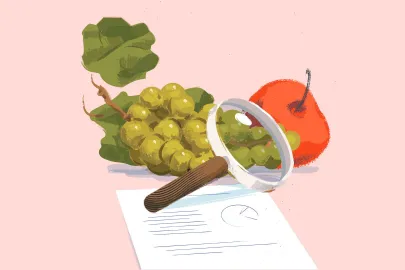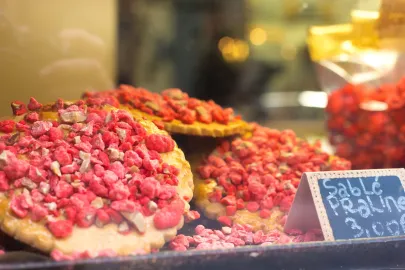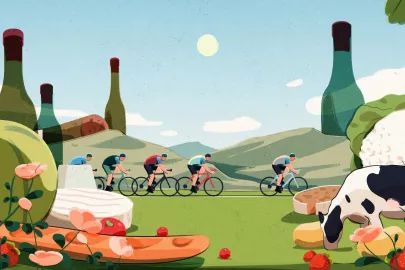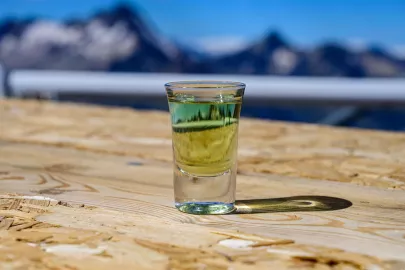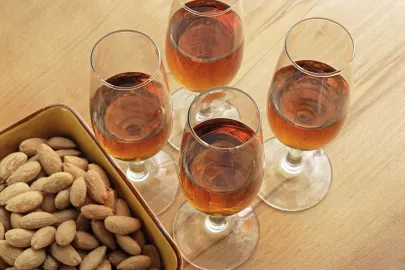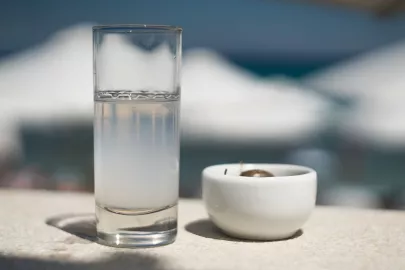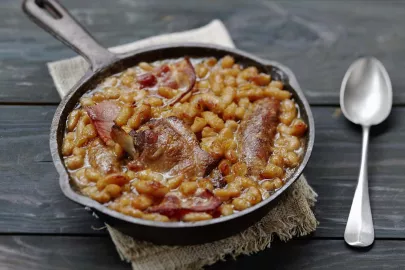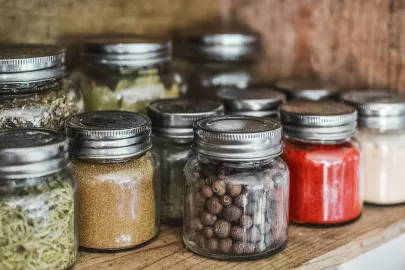Looking to level up your French food and beverage products at home? Look no further than the four quality-focused designations below, which promise to bring an authentic taste of France to your next meal—quality and place of origin guaranteed!
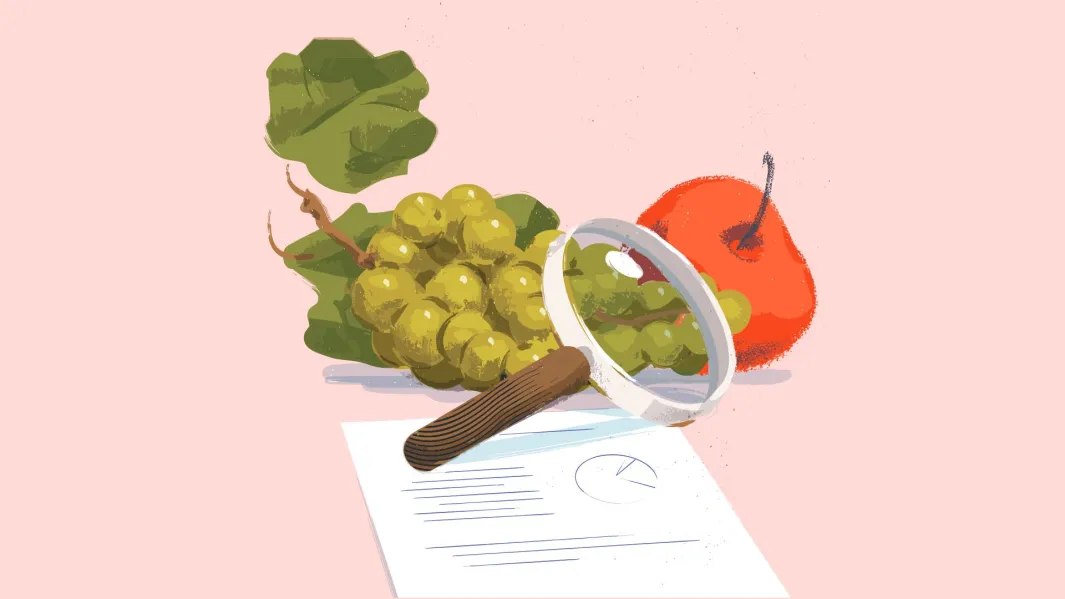
Quality labels play an important role in the European Union, especially when it comes to food and wine products. But what do these labels really mean, and how can you recognize them? Let’s find out! Our Taste France team narrowed down four of the most popular labels found on French food and wine products and broke down everything you need to know about their quality and geographic stipulations here (specific examples included!) Read on to learn the differences between PDO, PGI, Organic, and Label Rouge below.
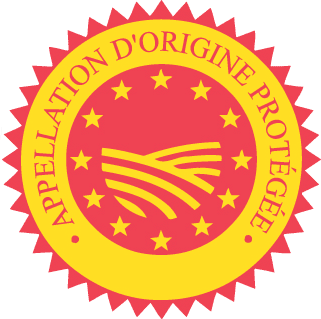
PDO - Protected Designation of Origin (PDO)
A Protected Designation of Origin (PDO), referred to in France as an Appellation d'Origine Protégée (AOP), is a certification used throughout the European Union that guarantees a product’s quality, and is also tied back to a specific origin of place. Beyond quality assurance, PDOs also affirm that the product at hand has been crafted and prepared within a specific geographic area, generally using traditional regional methods and local ingredients for production.
Examples:
🍷 Pouilly-Fumé PDO - Pouilly-Fumé PDO wine is crafted exclusively from Sauvignon Blanc grown in the Nivernais region of the Loire Valley, specifically within the Pouilly-sur-Loire area. Here, the soils are a unique blend of silex and limestone, which add to the distinct character of the wine. Pouilly-Fumé offers a bit more flexibility in the realm of yields and vinification compared to other stricter PDOs, such as Grand Cru-designated Burgundy.The Pouilly-Fumé has impressively boasted its PDO status since 1937.
🧀 Brie de Meaux PDO - Brie de Meaux PDO is crafted exclusively from milk sourced from cows raised in the designated area of production. In addition to specific raw ingredients, Brie de Meaux PDO must also be produced using meticulous techniques, including molding by hand with a “brie shovel.” The cheese is then salted, formed with a Penicillium mold, and aged for 4 to 8 weeks prior to release.
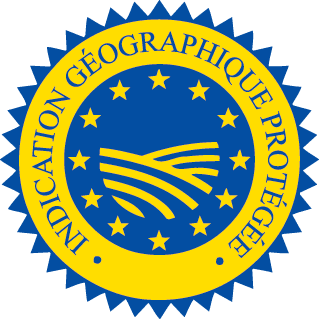
PGI - Protected Geographical Indication (PGI)
Like PDOs, PGIs—also used throughout the European Union—are also focused on quality and geographic specificity, though offer a bit more flexibility in the realm of production and preparation methods. While all stages of production, processing, and preparation must take place within a given region for PDO status, just one of the above steps must be completed for a product to achieve PGI status. Despite their broader reach, PGI products still ensure a strong connection to a product’s origin, and certainly denote a certain level of quality.
Examples:
🧂 Fleur de sel de Guérande PGI - The Fleur de sel de Guérande PGI denotes salt that’s been carefully harvested from the marshes of the Guérande Peninsula, located in western France. The marshes, which consist of clay ponds (called oeillets) are operated by local families using regional techniques. In short, the seawater is channeled into the ponds and allowed to naturally evaporate, concentrating and crystallizing the salt prior to gently harvesting and straining it.
🧀 Emmental de Savoie PGI - Emmental de Savoie PGI accounts for a mere 1% of Emmental cheese, and is crafted by only three regional cellars, locally referred to as fruitières. This special cheese is made from raw cow's milk, specifically from the Abondance, Montbéliarde, and Tarentaise breeds, which graze entirely on local hay during the winter. The milk is processed within 48 hours of collecting it, mixed with a rennet, and heated to curd. The cheese is then decurded using a special slicer, stirred, heated, and transferred to molds, then is immersed in brine, ripened for six weeks, and matured for 75 to 100 days.
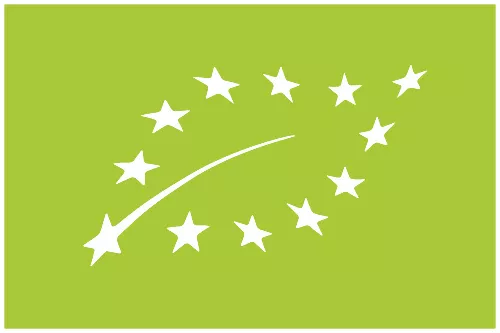
Organic Farming
The highly recognizable organic farming label, used and recognized in all of the European Union, ensures that agricultural products—including food and wine—have been crafted and processed in adherence to specific standards regarding environmental and animal health. These guidelines stipulate strict rules on free-range access for animal and livestock, and eschew the use of harmful pesticides and herbicides in vineyards, orchards, and farms. The organic label also requires that a minimum of 95% of ingredients used in a final product must be organic, with the remaining 5% adhering to strict conditions.
Example:
🍾 Back of Wine Labels - One of the easiest ways to identify if a wine is organic is to simply turn the bottle around and scan the back label. If you see the recognizable green logo, you’ll know the wine inside was produced adhering to organic farming and production methods!
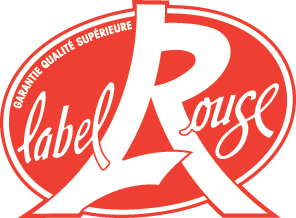
Label Rouge
Contrary to the three above designations that are used throughout the European Union, Label Rouge is a French-specific label that ensures superior quality on a variety of agricultural products. Although most frequently associated with poultry, the label is used on other meats and herbs, and signifies a superior quality and taste to those found in standard products. Label Rouge also requires specific traceability of a product’s history, from production to distribution and beyond.
Examples:
🌿 Herbes de Provence Label Rouge - Herbes de Provence received its Label Rouge designation in 2003, meaning quality standards have been set in place for this unique blend for over two decades. Label Rouge specifies that Herbes de Provence must boast an exact composition of 27% rosemary, 27% savory, 27% oregano, and 19% thyme, as well as be green in color and boast a minimum content of essential oils.
🐚 Normandy King Scallops Label Rouge - Label Rouge denotes that Normandy King Scallops unsurprisingly must hail from the coast of Normandy, and are identifiable based on their shape, which is characterized by a curved lower valve and flat upper valve. The shells of Normandy King Scallops are also unique, in that they’re large (approx. 5 inches across) and include a nut and coral along with the scallop inside.
Next time that French products are on your shopping list, look for the PDO, PGI, Organic, and/or Label Rouge logos for guaranteed quality and authenticity. Note: In the realm of wine and spirits, logos may not always be visible on the label; simply look for the accompanying ‘appellation d'origine protégée’ or ‘indication géographique protégée’ words for assured quality.
👉 To learn more about French labels and products of origin, visit https://www.tastefrance.com/us/about-french-products.
Contributor
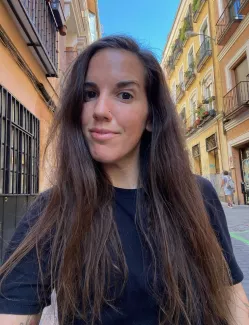
Editor

